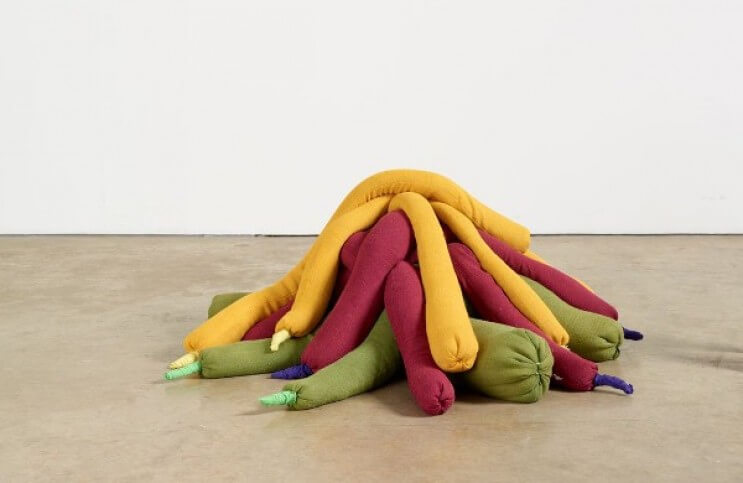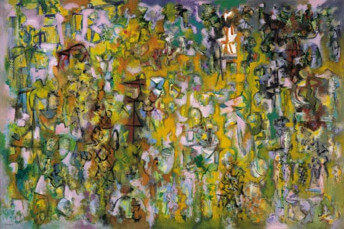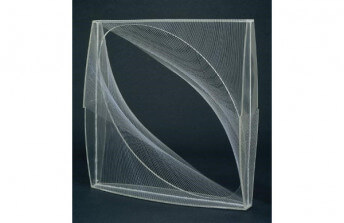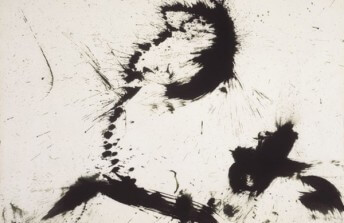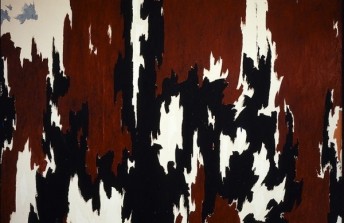British Abstract Art Exhibition Arrives in Nottingham
Jul 10, 2017
This year marks the 70th anniversary of the Arts Council Collection, the most substantial loaning collection of British modern and contemporary art in the world. In celebration of this milestone, the ACC has mounted a spectacular traveling exhibition of British abstract art from the 1960s. Titled Kaleidoscope: Colour and Sequence in 1960s British Art, the exhibition is alive with colors, shapes and forms. And like the optical instrument from which it takes its name, the keys to this exhibition are repetition and symmetry. In mounting the show, co-curators Sam Cornish and Natalie Rudd took a unique perspective, going far beyond the expected. Rather than focusing on the predictable categorizations of art movements into which most of the artist included in the show tend to get compartmentalized, they worked from the concept that at least during the radical decade of the 1960s, British abstract artists were more alike in their overarching concepts than they were different.
The1960s Look
One of the unavoidable preconceptions one gets when thinking back to various decades is that the time period had a certain iconic look. We imagine cinematic scenes from the 1980s, or the 1960s, or especially the 1960s, and certain types of images pop into our head. But is it really true there is such thing as the look of a certain decade? Or by selectively appropriating certain images from the time and replaying them endlessly across all forms of media have the taste makers in advertising, fashion and popular culture just made it seem true? This is one of the most fascinating ideas addressed by Kaleidoscope: Colour and Sequence in 1960s British Art.
The show brings together a group of artists that is incredibly diverse. It includes everything from geometric abstract sculptors like Michael Bolus and Tim Scott, to figurative Pop Artists like Antony Donaldson and Eduardo Paolozzi, to giants like Bridget Riley, William Turnbull and Anthony Caro. Also thrown in the mix are Kim Lin, who explored natural and organic forms in her abstract sculptures; Robyn Denny, who turned from tachisme to simple, lined compositions and ultra flat surfaces in the 60s; Barry Flanagan, who is mostly known for his figurative bronze sculptures of animals; Richard Smith, a whimsical Pop printmaker and painter; and 14 other artists. But despite featuring so many opposing aesthetic positions, oddly the curators make the case that all of these artists were essentially exploring similar concepts, albeit in vastly different ways, the result of which, indeed, seems to be that they created a unified 1960s “look.”
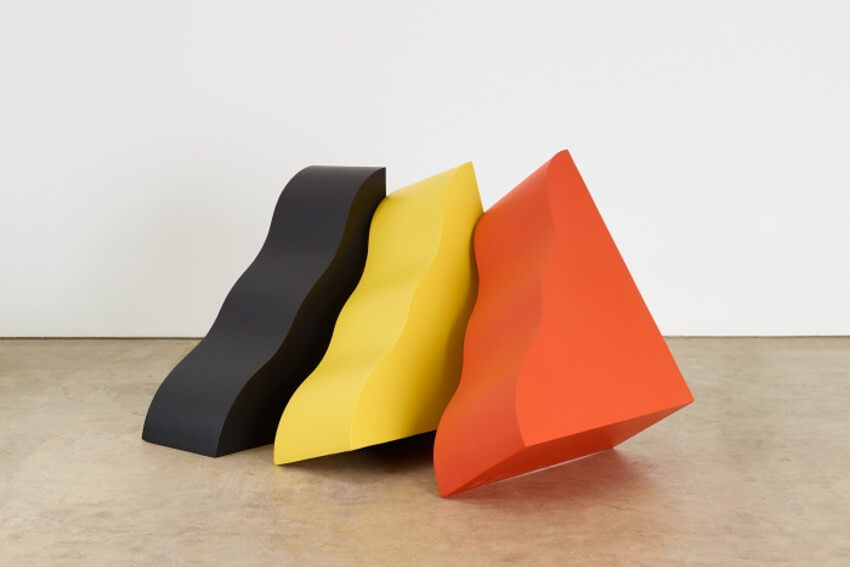 William Tucker - Thebes, 1966, paint on wood, 121.9 x 137.2 x 203.2cm, photo courtesy of the Arts Council Collection
William Tucker - Thebes, 1966, paint on wood, 121.9 x 137.2 x 203.2cm, photo courtesy of the Arts Council Collection
Color, Pattern and Form
What defines that “look” as far as this exhibition is concerned is a combination of color, form, shape, symmetry and repetition. The sequentially spaced blocks in an Anthony Caro sculpture speak in fascinating conversation with the kinetic cubes protruding from the surface of a wall object by Mary Martin. And both connect visually as well as conceptually with the methodical lines and colors in a painting by Jeremy Moon. Though substantially different in approach, the phantom repetitions of form in the billboard-inspired painting Trio by Richard Smith resonate with the natural accumulations emanating from heap 4 by Barry Flanagan, and the repetitive biomorphic forms in Thebes by William Tucker.
Each of these artists was inventive and even radical (and their work still retains the full impact it had half a century ago). Yet when considered together like this it is clear that some much larger conversation was going on that reaches beyond inventiveness, toward something universal and timeless. Kaleidoscope: Colour and Sequence in 1960s British Art manages to demonstrate the break with history represented by the work of these artists, while also highlighting the commonalities that allowed their influence to touch the entire globe and affect all aspects of the visual culture.
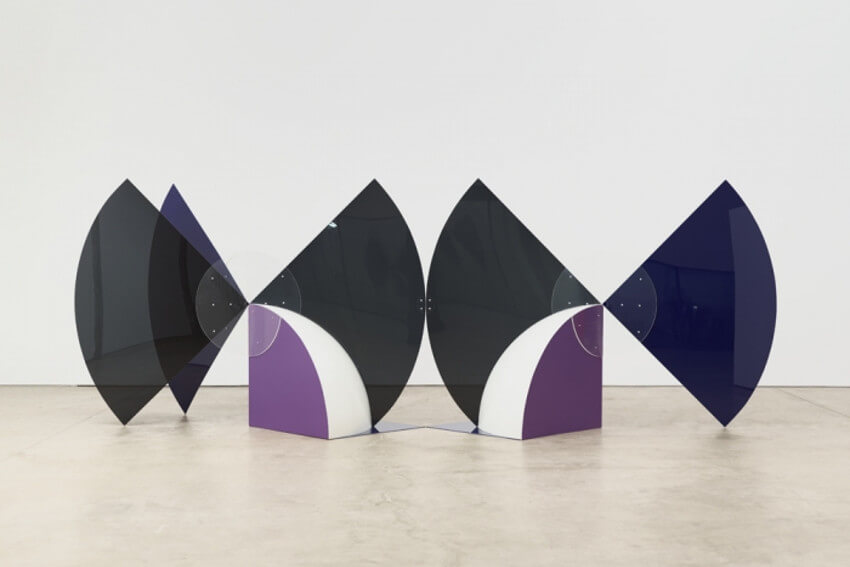 Tim Scott - Quinquereme, 1966, Fibreglass, acrylic sheet and wood, 84¾ x 240½ x 59¼ (image courtesy the Arts Council Collection, Southbank Centre, London © the artist 2017, Photo by Anna Arca
Tim Scott - Quinquereme, 1966, Fibreglass, acrylic sheet and wood, 84¾ x 240½ x 59¼ (image courtesy the Arts Council Collection, Southbank Centre, London © the artist 2017, Photo by Anna Arca
Nottingham is Next
Featuring mostly work from the collection, along with select loans from other UK collections,Kaleidoscope: Colour and Sequence in 1960s British Art is the first major survey of 1960s British art the Arts Council Collection has mounted in nearly two decades. The exhibition first opened at Longside Gallery and the Yorkshire Sculpture Park in West Bretton, which is the permanent home to many important works by British sculptors Henry Moore and Barbara Hepworth, and will next open on 15 July at Nottingham Lakeside Arts at the University of Nottingham, where it will run through to 24 September. (Admission is free.)
After concluding its run at Nottingham, Kaleidoscope will travel to Mead Gallery at the Warwick Arts Center at the University of Warwick from 5 October through to 9 December, and will then end its run at the Walker Art Gallery at National Museums Liverpool, where it will be on view from 24 February through to 3 June 2018. Accompanying the exhibition is a fully-illustrated catalogue, which includesessays by the curators Natalie Rudd and Sam Cornish, as well as high quality images of the work of more than 20 of the artists included in the show, including Tess Jaray, Robyn Denny, Phillip King, Richard Smith, Bridget Riley and William Turnbull. Also available for download free of charge at the Arts Council Collection website is a PDF of an in depth education packet for students who are attending the show.
Featured image: Barry Flanagan - heap 4, 1967, Hessian/Sacking, Sand. 23 5⁄8 x 51 9⁄16 x 39 3⁄8 in, photo courtesy the Arts Council Collection, © The Estate of Barry Flanagan, courtesy of Plubronze Ltd. Photo: Anna Arca.
By Phillip Barcio
